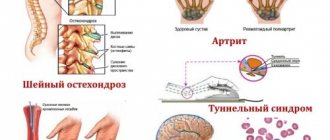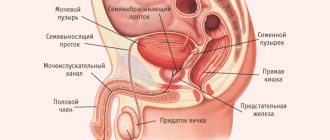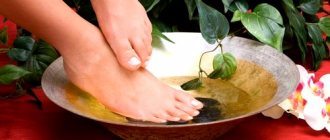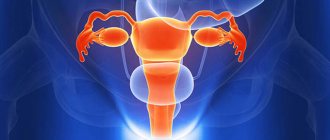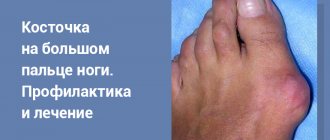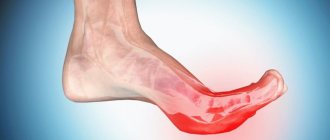What to do if you have a burning sensation in your legs?
If there is a burning sensation in the legs below the knee and does not go away within 1-2 days, you should consult a doctor who will prescribe an examination to find out the cause of this condition. You need to contact a therapist who will listen to all your complaints and refer you to the appropriate medical specialist. This could be an endocrinologist, a vascular surgeon, a dermatologist, or a neurologist. To accurately determine which doctor you will need, you will need to undergo the following types of examination:
- General and biochemical blood tests, urine analysis, and blood sugar must be checked.
- Analysis of the content of vitamins and microelements in the body.
- Checking hormonal balance.
- Study of muscle tissue using electromyography.
- Nerve conduction study.
Etiology
A burning sensation in the leg or both lower extremities may be a manifestation of the following pathological processes:
In addition, the cause of burning legs can be the following etiological factors that cannot be considered as separate diseases:
- allergic reaction;
- mechanical damage to the skin of the legs;
- long-term physical, static loads;
- wearing shoes that are uncomfortable, ill-fitting, or made of poor quality material;
- stress, frequent nervous tension.
Also, a burning sensation in the legs can be felt during pregnancy, which is a natural reaction of the body to physiological changes in the body. In any case, you need to understand that only a doctor can determine why such a symptom occurs and prescribe the correct treatment.
Treatment
Therapy for burning in the legs depends on the underlying disease that provoked the unpleasant symptom. Doctors use drug therapy, physiotherapeutic procedures, and physical therapy for treatment. In some, especially severe cases, surgery is necessary.
If the legs are burning above, below the knees or, then treatment will depend on the diagnosis. There are various methods that can help such patients. But the choice of one or another remedy should be made only by a doctor, guided by the standards of therapy and his own experience. Concomitant diseases that will likely be identified in the patient are also important. Therefore, treatment must be strictly individual.
Medicines
Treatment of diseases of the lower extremities begins with the use of medications. This is due to the fact that they have a pronounced effect on various parts of the pathological processes that provoke a burning sensation in the legs. Taking into account the origin of painful symptoms, the following drugs are prescribed:
- Non-steroidal anti-inflammatory drugs (Movalis).
- Muscle relaxants (Mydocalm).
- Vitamins (Milgamma,).
- Vascular (Trental, Actovegin).
- Antiplatelet agents (Curantil, Cardiomagnyl).
- Venotonics (Detralex, Aescusan).
- Antioxidants (Mexidol, Berlition).
Topical agents – ointments, gels, creams – also play a certain role. In some cases, blockades with hormones and anesthetics may be used.
Physiotherapy
For diseases of the musculoskeletal, nervous and vascular systems, physical methods of treatment are indicated. They help reduce signs of inflammation, improve blood flow in tissues and activate local metabolic processes. Therefore, for burning pain, the following procedures may be prescribed:
- Electro- and phonophoresis.
- Magnetotherapy.
- Laser treatment.
- UHF therapy.
- Reflexology.
- Cryotherapy.
- Water and mud therapy.
It must be remembered that physiotherapy is contraindicated for many connective tissue diseases, tumors, skin diseases, and various infectious pathologies.
Problems with the lower extremities are difficult to solve without non-drug correction methods such as massage and gymnastics. The first refers to passive influence, and the second to active. Massage helps improve blood circulation in tissues, normalize muscle tone, preparing them for physical exercise. And thanks to gymnastics, mobility in the affected parts of the limb is restored and neurovascular trophism is improved.
Operation
Some diseases still require surgery. Operations are indicated for severe injuries, severe osteochondrosis, venous and arterial thrombosis, and tumors. The main goal is to remove the pathological focus and restore the anatomical relationships in the tissues. The technique and extent of the operation are determined by the disease.
Having determined why your legs are burning, you need to immediately begin treatment, the type and methods of which will depend on the diagnosis. But in any case, better results can be expected with early initiation of therapeutic correction.
The sensation in the lower extremities is observed due to the dilation of blood vessels in them and the influx of a large amount of blood to them. This is quite normal. To keep your feet healthy, you just need to wear looser shoes, try to sit more, and take hot baths with essential oils in the evening.
https://www.youtube.com/watch?v=52f-KBvdek4
If the legs are burning above, below the knees or the knees are burning, then treatment will depend on the diagnosis. There are various methods that can help such patients. But the choice of one or another remedy should be made only by a doctor, guided by the standards of therapy and his own experience. Concomitant diseases that will likely be identified in the patient are also important. Therefore, treatment must be strictly individual.
Medicines
- Non-steroidal anti-inflammatory drugs (Ketorol, Movalis).
- Muscle relaxants (Mydocalm).
- Vitamins (Milgamma, Combilipen).
- Vascular (Trental, Actovegin).
- Antiplatelet agents (Curantil, Cardiomagnyl).
- Venotonics (Detralex, Aescusan).
- Antioxidants (Mexidol, Berlition).
Physiotherapy
It must be remembered that physiotherapy is contraindicated for many connective tissue diseases, tumors, skin diseases, and various infectious pathologies.
Operation
Burning in the legs is not a disease, but a symptom of a disease. This may indicate a serious pathology that must be treated. It doesn’t matter whether the pain appears once or is present constantly, you should definitely consult a doctor (rheumatologist, neurologist or therapist).
There are several reasons that can cause burning sensations in the lower extremities. They are classified into:
- External, they are also called external.
- Internal.
The first factors include uncomfortable, constricting shoes; hosiery and trousers are not made of natural, but synthetic material; a specialty that involves being on your feet all the time.
Internal factors include:
- Hormonal imbalance.
- Blood sugar is higher than normal.
- Avitaminosis. Particular attention is paid to the lack of B vitamins.
- Pathology of the vascular system.
- Pathology caused by impaired innervation (impaired nerve function). This is usually associated with previous injuries that affect the brain. This leads to impaired passage of nerve impulses.
- Lesions of the skin on the legs caused by fungal microcells.
A burning sensation can be diagnosed:
- For diabetes mellitus.
- For varicose veins of the lower extremities.
- For fungal infections of the feet.
- For prostatitis or inflammation of the prostate gland.
- For diseases of the spinal column - osteochondrosis.
- For vegetative-vascular dystonia (VSD).
- With neurosis.
- With hereditary predisposition.
- During pregnancy.
Diabetes
Diabetes mellitus is characterized by the symptom of diabetic neuropathy, which occurs due to damage to the vessels of the capillary network.
Their defeat leads to the fact that the nerve endings begin to have poor blood supply. As a result, the patient experiences a feeling of goosebumps, tingling and burning sensations.
If you press on your toes, pain reflexively occurs, spreading from the foot and above.
With varicose veins, in addition to burning, there are other symptoms: swelling of the lower extremities, which manifests itself towards the end of the day, spider veins, muscle cramps, which often appear at night. Either pain or a feeling of fullness appears in the calves of the legs.
Fungus
If a fungus appears, then the clinical picture has the following characteristics:
- A burning and itching sensation appears at the site of the fungus.
- Symptoms are present throughout the day.
- The disease does not go away on its own. If antifungal therapy is not started in a timely manner, the clinical picture becomes clearer.
For prostatitis
If a man has a history of prostatitis, then the following manifestations are possible:
- Aching pain appears in the projection of the inner thigh. In this case, patients report a feeling of squeezing of blood vessels.
- A burning sensation and shooting sensations are felt in the legs below the knee.
- The pain symptom is not always present. It appears spontaneously and goes away on its own.
For osteochondrosis
The disease osteochondrosis is characterized by pain in the lumbar region, gradually the pain begins to spread towards the hips and calf muscles.
Usually only one of the lower extremities is involved in the pathological process. In addition to pain, there is lameness, muscle cramps, weakness in the legs and numbness in the lower half of the body.
During movement, tingling and burning sensations appear above the knee.
VSD is characterized by burning sensations of different localization (in the legs, torso, upper extremities), but most often it is observed in the legs. With this disease, patients note increased weakness, fatigue, and problems sleeping. They are thrown either hot or cold. The sweat glands work more actively than usual, which leads to increased sweating. Hands and feet with VSD are always cold.
Neurosis
With neurosis, pain most often appears in the joints of the lower extremities. Such patients step on their feet with caution, because there is a feeling of paralysis of the legs. Their gait is uncertain and shaky. They cannot walk or even stand for a long time. Symptoms usually appear in the tissue below the knee and are characterized by numbness, squeezing and burning sensations.
In pregnant women
During pregnancy, not everyone experiences a burning sensation in their legs. This is usually a manifestation of gestosis (complication) in late pregnancy. Because the disease is characterized by severe swelling and increased pressure, compression of blood vessels occurs and deterioration of blood supply to the tissues of the lower extremities. This leads to pain and burning.
If more than 2 days have passed after the onset of burning sensations in the legs, but the symptom does not subside, this is a reason to immediately consult a doctor to diagnose the disease. With such a symptom, one doctor will not be able to make an accurate diagnosis; you need to consult with several specialists:
- Vascular surgeon.
- Endocrinologist.
- Neurologist.
- Dermatologist.
You can first make an appointment with a therapist, and he will give you a referral to other doctors. Specialists conduct a full examination and prescribe a set of necessary tests:
- Laboratory testing of blood and urine. The blood test is not only general. Examine the level of glucose in it.
- Analysis of the concentration of vitamins and microelements.
- Blood test for hormone levels. Required if there is a suspicion of hormonal imbalance.
- Electromyography, to study the functioning of muscle fibers.
- Nerve conduction studies to confirm normal functioning of the nervous system.
Prevention
To prevent burning and pain in the legs during pregnancy, you need to monitor your health. Eat right, watch your body weight. Follow all recommendations of the gynecologist to prevent the development of gestosis.
To prevent diseases that can cause pain and burning in the tissues of the legs, you need to adhere to the right diet. There are more foods rich in microelements (buckwheat and oatmeal, beans, carrots, eggplants, nuts, etc.). Drink more freshly squeezed juices from apples, grapes and cranberries. Drink at least 2 liters of water per day.
It is better to completely avoid drinking alcohol and tobacco products. Drink less strong black tea and coffee. It is better not to eat spicy, salty or peppery foods, as well as fried foods. Try to avoid stressful situations. Lead a healthy lifestyle.
Causes of burning calves
If the veins in the legs hurt, then the reason for this is varicose veins, formation of nodes, venous insufficiency, swelling, night cramps, thrombosis, sharp pain, redness, cyanosis, thrombophlebitis, phlebitis, severe pain, thickening of the vein, red stripes along the vessel. Raising the lower extremities to an elevated position, a cold compress, ointment, or gel with heparin can help temporarily alleviate the condition. Folk remedies and diet, exercises will help increase the effectiveness of treatment with venotonics Phlebodia, Detralex, external drugs Troxevasin gel, Lyoton.
Diagnostics
Additional methods help determine the cause of heat in the lower extremities. Given the multiplicity of possible conditions, various laboratory and instrumental tools are needed. These include:
- Biochemical blood test (glucose, coagulogram, inflammatory markers, rheumatic tests, etc.).
- Radiography.
- Ultrasound of soft tissues and blood vessels.
- Tomography (computer and magnetic resonance imaging).
- Neuromyography.
How to treat burning in the legs will become clear after a comprehensive diagnosis, including:
- electromyography;
- laboratory tests of urine and blood;
- study of the conduction of nerve impulses;
- CT and MRI.
Based on the results of the examination, the doctor gives the patient an accurate diagnosis.
We donate blood for biochemical analysis:
- We determine blood sugar levels.
- definitions of rheumatic test.
- It is advisable to determine markers for the presence of inflammation.
- A coagulogram is required.
- You will have to undergo an x-ray.
- Perform an ultrasound of blood vessels and soft tissues.
- You may need a tomography (computed or magnetic resonance imaging).
- And also neuromyography for diagnosing the nervous system.
Legs are burning with fire in the elderly, what to do?
If your feet are burning, there can be many reasons for this condition. And the lower limbs may have absolutely nothing to do with this phenomenon. Often the feet of the feet burn in older people, this is due to the fact that their body’s resistance to various diseases decreases with age. The medical name for this phenomenon, when the heels burn or the soles bake, is Gopalan syndrome. It may be accompanied by symptoms such as a feeling of heaviness, pain, and sometimes even itching.
The reasons why the feet and lower extremities burn at night is due to a narrowing of the lumen of a vein or vessel, and then a burning sensation and itching appears in the feet and toes. 3,4/5 (16).
Preventive measures
To prevent pain and burning in your legs from haunting you, it is easier to prevent these symptoms. To do this, you need to carefully monitor your health, especially nutrition and physical activity.
The food should contain more microelements, vitamins, and a sufficient amount of liquid - but not tea and coffee, but juices and water. It is better to completely eliminate tobacco products and minimize alcohol consumption.
You should also avoid stress - often it harms your health more than a sedentary lifestyle and fatty foods combined.
Symptoms
In this case, there is no generally accepted clinical picture, since this is only a sign of a nonspecific nature, and not an independent pathological process. Symptoms will be characterized depending on the underlying factor.
A burning sensation in the legs with varicose veins will be accompanied by the following clinical picture:
- burning of the legs may be replaced by a feeling of warmth;
- pain, swelling in the legs at the end of the day;
- heaviness;
- dilated veins, which is especially clearly visible after prolonged physical activity;
- night cramps in the legs;
- the skin in the lower leg area takes on a blue tint, and lumps may appear.
As the pathological process becomes more complicated, a burning sensation is present almost constantly, and the clinical picture is supplemented by the following signs:
- symptoms of skin nutritional disorders;
- formation of trophic ulcers;
- it becomes difficult for a person to move.
If this disease is not treated in a timely manner, then gangrene begins, that is, an irreversible pathological process.
If the cause of burning in the legs is thrombophlebitis, then the symptoms will be characterized as follows:
- pain in the leg muscles;
- redness of the skin;
- heaviness, feeling of discomfort;
- slight swelling of the legs.
As with varicose veins of the lower extremities, as the severity of the disease worsens, the symptoms will become more pronounced, even at rest. It should also be noted that the acute form of this pathological process can quickly turn into a gangrenous form, which leads to complete loss of a limb and associated complications.
With obliterating endarteritis, a burning sensation in the legs will be accompanied by the following symptoms:
- feeling of coldness and “pins and needles” in the legs;
- swelling of the limbs;
- increased fatigue, even with minor physical exertion;
- pale skin;
- the formation of ulcers, and subsequently necrosis, which is an irreversible pathological process;
- weakening of the pulse in the lower extremities.
It should be noted that in the last stages of the development of the disease, the pulse in the legs is practically not palpable. Treatment should be started immediately.
Periodic burning in the lower extremities can be caused by polyneuropathy, which is characterized by the following clinical picture:
- feeling of weakness in the muscles of the legs, sometimes arms;
- change in gait - it becomes shaky, unsure;
- swelling of the lower extremities;
- tremor;
- the burning sensation may be replaced by cold;
- redness or bluishness of the skin;
- decreased sensitivity reflexes;
- gastrointestinal tract disorders are possible;
- exacerbation of existing chronic diseases.
A complication of such a pathological process in the legs can be a complete loss of the ability to move independently, and death is no exception.
A burning sensation in the legs may be a symptom of diabetes. In such cases, this symptom will be accompanied by the following clinical picture:
- constant feeling of thirst;
- dehydration of the body;
- swelling of the legs;
- dizziness, headaches;
- frequent urination;
- heaviness in the legs, numbness;
- cramps in the calf muscles, which may worsen at night;
- skin itching, which can be especially intensified at night;
- deterioration of the body's protective functions;
- temperature readings become below acceptable values;
- decreased sex drive;
- tingling in the heart area.
In some cases, this clinical picture is complemented by deterioration of vision and increased tearfulness.
Often, burning in the legs can be a manifestation of the clinical picture of vegetative-vascular dystonia, which can be characterized as follows:
- unstable blood pressure;
- frequent headaches that are paroxysmal in nature;
- sudden mood swings;
- dizziness;
- increased fatigue;
- sleep cycle disturbance;
- causeless anxiety, fear;
- dyspnea;
- feeling of a lump in the throat;
- pain in the heart area.
With this disease, a burning sensation in the legs is felt periodically, since the disease itself is symptomatic.
It should be noted that this symptom is often one of the signs of the clinical picture of a disease such as gout. In such cases, the following clinical picture may occur:
- pain in the metatarsophalangeal joint;
- the skin in the affected area becomes red and swelling may occur;
- the burning sensation may spread to the entire leg;
- increased fatigue, even with minor static physical activity;
- increased body temperature, which is accompanied by fever and chills;
- signs of general intoxication of the body.
In case of systemic diseases, the clinical picture can be characterized as follows:
- elevated or high body temperature for no apparent reason;
- rashes randomly throughout the body (the nature and intensity of the rashes will depend on the identified root cause);
- disruption of the functioning of the gastrointestinal tract and cardiovascular system;
- sudden mood swings, possible attacks of aggression;
- general deterioration of health;
- weight loss or, on the contrary, a sharp increase in weight;
- disorders in the musculoskeletal system;
- local temperature increase.
You need to understand that a similar clinical picture can manifest itself in any other pathological process, so you should consult a doctor and not self-medicate.
If the cause of burning in the lower extremities is a bacterial infection in the body, then the clinical picture will be characterized by symptoms of general intoxication of the body, possible dysfunction of the gastrointestinal tract and skin rashes.
With a fungal infection, this symptom will be accompanied by the following additional signs:
- brittleness of nails, formation of dark spots on their surface;
- spots on the skin that may itch and peel. As the pathological process develops, bubbles with liquid may form at the site of the spots, which burst and form crusts;
- unpleasant odor from feet;
- cracking of the skin in the area of the feet;
- Possible subfebrile body temperature.
Folk remedies
In addition to traditional medicine, traditional methods will help relieve the irritating feeling of heat.
An ointment based on horsetail relieves burning sensation in the leg muscles. To prepare it you will need 1 tbsp. l. dry plant and 2 tbsp. l. butter. The ingredients must be mixed. The resulting mass is applied to the skin of the legs, covered with film and wrapped.
Regular white cabbage not only relieves discomfort, but also promotes the resorption of small bruises. You need to separate the sheet and apply it to the place where it hurts or burns. The sheet is fixed and left for 15 minutes, then a new one is applied.
Muscle tension can be relieved with peas or cereal. Buckwheat or legumes are poured onto a mat and walked on them barefoot for 15 minutes. Cereals can be replaced with small sea pebbles.
Ice cubes applied to the painful area can temporarily relieve irritating sensations.
About pathologies
The causes of burning in the muscles may be pathological in origin. Doctors refer to such situations as:
- Varicose veins, thrombosis.
- Violation of metabolic processes.
- Disturbances in the functioning of the endocrine system.
- Diseases caused by deterioration of conductivity in the nervous system.
- Inflammatory and allergic processes.
Any of these diagnoses requires complex treatment. If you do not use special drugs against the underlying disease to reduce pain, general restoratives and painkillers will not give the necessary effect.
Lactic acid accumulation
This is another popular reason that causes burning sensation in the thigh muscles. If a person leads a quiet, inactive lifestyle with significant physical exertion during training, he may feel slight pain. But the next day, when the level of lactic acid in the body increases, the pain symptoms will become more pronounced. In this case, a person who regularly exercises will feel a burning sensation in the calf and other muscles.
To avoid unpleasant consequences after training, it is necessary to do a warm-up before strength training. And then do a set of muscle stretching exercises.
Prevention
As for prevention, there are no targeted methods, since this is a symptom and not a separate pathological process. It is advisable, in this case, to adhere to the prevention of etiological factors, wear only comfortable and high-quality shoes, seek medical help in a timely manner, and not self-medicate.
Burning in the legs is not a disease, but a symptom of a disease. This may indicate a serious pathology that must be treated. It doesn’t matter whether the pain appears once or is present constantly, you should definitely consult a doctor (rheumatologist, neurologist or therapist).
Muscle pain after exercise
Everyone is waiting for her in the morning to evaluate how well the training was done. It seems to many: the more difficult it is to walk after “leg day,” the better for muscle growth. There is a direct connection between both. And when pain = growth, strength becomes the ultimate goal of training. But there is no direct connection, and pain is not a necessary condition for muscle growth, and in some cases it even interferes.
Why do my muscles hurt the next day?
Typically, soreness appears 6-24 hours after training and goes away within a few days. It can be very strong or barely noticeable. Most often, soreness appears if you have strained your muscles more than usual: increased working weights or returned to training after a break.
Most often, pain appears after exercises with a greater emphasis on the eccentric phase (stretching the muscle under load).
For example, during a biceps curl, the muscle contracts and becomes shorter. When you lower the barbell down, the muscle is stretched by the gravity of the barbell. In this phase, called the eccentric phase, microdamage to fibers occurs in the muscles.
Sometimes you can still hear that “in the morning” muscles hurt because of lactic acid, but it is eliminated from the body within an hour after training.
Is it harmful?
There is the concept of an inverted U-curve, which shows the dependence of the effect on the dose. Too little is bad and ineffective, too much is also bad, and something in between is best.
Severe damage over and over again can increase the growth of connective tissue in the muscles, this will make them inelastic and rigid. The proportion of collagen fibers, which are responsible for strength, increases (this is a mechanism of adaptation to frequent damage). Because of this, the range of motion may decrease, joints become less mobile, and strength is lost.
Taking more than a week to recover from a workout does more harm than good. If it hurts to sit, walk up the stairs, raise your arms, if the pain interferes with everyday life, you have exceeded your body’s ability to recover. Well, in the most extreme cases, rhabdomyolysis can develop. Fortunately, this happens very rarely.
Some muscle damage may be necessary to stimulate muscle growth, but muscle damage can occur without pain.
In addition, the muscles, connective tissue, nervous system and immune system (what is responsible for the inflammatory response) become increasingly efficient and resistant to damage. The more intensely you train, the greater your body's resistance to muscle pain, even if you damage the fibers.
And lastly: a lot depends on the individual person and his genetic characteristics. Some people almost never feel pain after training, but this does not mean that they are training ineffectively.
People who don't train too hard sometimes grow better simply because they can train more often and recover faster. Unlike those who, every workout, make themselves unable to walk or sit and are forced to skip workouts or exercise through pain at half strength.
The goal of training is progress, not fatigue and pain. Exercising to the point of extreme fatigue and pain just makes you tired and sick.
Pain, numbness, tingling, burning are signals that the body sends us, notifying us of problems in a certain organ. If these symptoms appear regularly, they cannot be ignored, as they may be the first signs of the development of serious diseases. A burning sensation in the thigh muscles may indicate pathology of the joint, muscles, ligaments, nerves or blood vessels of the lower extremities.
Prevention measures
To prevent venous diseases, you need to analyze your lifestyle:
- if necessary, increase physical activity or, conversely, reduce excessive stress;
- if working conditions require prolonged sitting or standing, take short breaks to rest;
- get rid of bad habits (drinking alcohol, smoking) or minimize them;
- give your legs a rest in the evening by placing them on a raised platform (pillow);
- Ladies should avoid oral contraception, which may contribute to the formation of blood clots.
If there are the first signs of varicose veins, it is useful to wear compression garments (stockings, tights), which prevent the formation of edema and help activate blood flow in the deep veins.
Repeated pain in the vessels indicates some kind of problem in the body. There is no need to try to treat them yourself or to dull the pain in the veins by taking painkillers. It is necessary to consult a doctor to determine the true cause of the discomfort and prescribe the correct therapy.

